Bioacoustic correction is an innovative therapeutic method that harnesses the power of sound waves and vibrations for health improvement. This approach is based on the understanding that every cell, tissue, and organ in our body has its own resonance frequencies, and by affecting them with specially selected sound waves, it is possible to trigger self-recovery and self-regulation processes in the body.
The origins of bioacoustic correction trace back to ancient sound therapy practices that have been used in various cultures for thousands of years. Even in ancient times, people intuitively understood the healing power of sound and used it to treat various ailments. For example, in Ancient Egypt, priests used singing and musical instruments to heal the sick, while in Ancient Greece, Pythagoras and his followers studied the effects of musical modes on the body and soul.
However, modern science and technology have significantly enhanced and systematized this method, turning it into an effective and safe tool for treating a wide range of diseases. Thanks to advances in physics, biology, medicine, and computer technology, scientists have been able to study more deeply the influence of sound waves on living organisms and develop specialized equipment for conducting therapeutic procedures.
Main Goals of Bioacoustic Correction:
- Restoring disrupted body functions
- Eliminating stagnation and inflammation
- Activating metabolic processes and improving blood circulation
- Normalizing the energy balance and informational flows in the body
- Stimulating self-recovery and self-regulation processes
The advantages of this method lie in its safety, non-invasiveness, and the absence of side effects when properly applied. Unlike many medications and surgical interventions, bioacoustic correction does not harm the body but rather activates its own self-regulation and recovery mechanisms.
It can be used as a standalone therapy or in combination with other methods, enhancing their effects. Many patients report feeling energized, with improved mood and overall well-being after bioacoustic correction sessions.
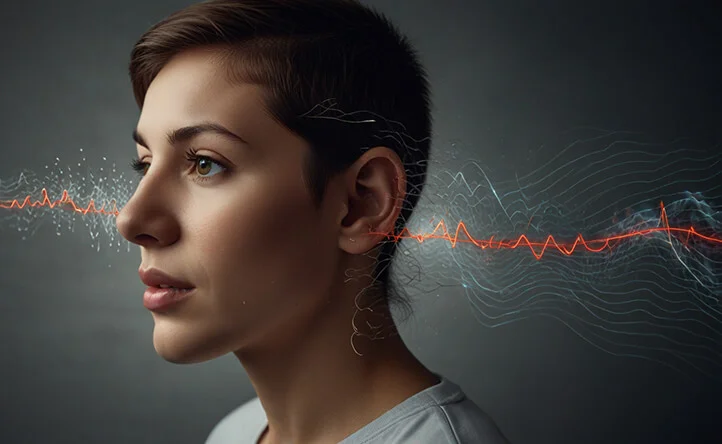
Principles of Bioacoustic Correction
Bioacoustic correction is based on fundamental physical principles and the properties of living matter. To understand its mechanism, it is necessary to consider the interaction of sound waves and vibrations with biological systems at the molecular, cellular, and tissue levels. These interactions form the basis of the therapeutic effect of this method.
Each living organism is a complex oscillatory system, where all processes are accompanied by energy generation and transmission in the form of wave oscillations. These oscillations occur at various levels – from the molecular to the whole organism. Each structure, from individual molecules to entire organs, has its own resonance frequencies at which it functions most efficiently. Bioacoustic correction affects these resonance frequencies, restoring harmonious oscillations and activating self-regulation processes in the body.
Use of Sound Waves and Vibrations
Sound waves and vibrations are fundamental forms of energy that permeate all living organisms. Each cell, tissue, and organ in our body has its own resonance frequencies at which they function most effectively. These frequencies are determined by the structure and properties of biological molecules, cells, and tissues.
When sound waves and vibrations corresponding to these frequencies are applied, resonant amplification of oscillations in cells and tissues occurs, leading to their activation and normalization of vital processes. Bioacoustic correction “tunes” the body to an optimal mode of operation, similar to how a musical instrument is tuned to produce harmonious sounds.
Resonant Impact on Cells and Tissues of the Body
The resonant impact on cells and tissues occurs due to the ability of sound waves and vibrations to penetrate deeply into body tissues. Unlike many other physical factors, they spread almost unhindered in soft tissues without encountering significant obstacles.
Specially selected frequencies can affect various processes in the body, such as:
- Restoration of the cell membrane potential and improved permeability for nutrients and oxygen
- Activation of cellular metabolism and energy exchange by stimulating mitochondrial activity
- Elimination of stagnation and improvement of blood and lymph microcirculation
- Normalization of the nervous and endocrine systems, restoring the balance of neurotransmitters and hormones
- Stimulation of regenerative processes through activation of cell division and protein synthesis
Thus, bioacoustic correction has a complex impact on the body, normalizing its function at fundamental levels.
Impact on Energy and Information Processes in the Body
According to modern scientific understanding, all processes in the body are accompanied by energy and information flows. Energy processes are related to metabolism and the transformation of various forms of energy, while information processes are connected with the transmission of signals and the regulation of functions at molecular, cellular, and systemic levels.
Bioacoustic correction influences these flows, helping to restore harmonious energy-informational exchange. The impact of sound waves and vibrations can normalize the electromagnetic fields of cells and tissues, improve the transmission of informational signals between different body systems, and activate self-regulation and self-recovery processes.
Many scientists believe that disruptions in energy-informational exchange are at the root of most diseases, including chronic and psychosomatic disorders. Therefore, by restoring these processes, bioacoustic correction effectively combats a wide range of pathologies.
Moreover, some studies suggest that sound waves and vibrations can affect the structure of water in the body’s cells and tissues. Water, which constitutes a significant part of living systems, has remarkable properties and plays a key role in information exchange at the cellular level. By influencing its structure, bioacoustic correction can optimize information and energy exchange processes in the body.
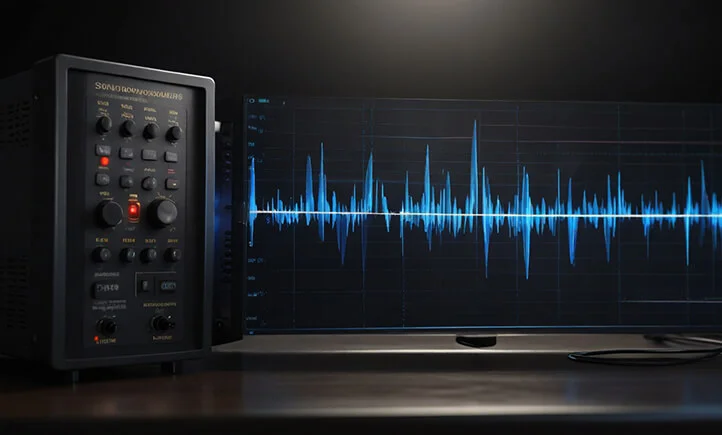
Equipment for Bioacoustic Correction
Bioacoustic correction procedures are carried out using high-tech specialized equipment, developed in accordance with the latest scientific and technical advancements. It generates and transmits sound waves and vibrations with specific parameters needed to affect the resonance frequencies of various biological structures.
Modern bioacoustic correction systems are complex setups consisting of several key components. These include precision signal generators, emitters and applicators for transmitting oscillations, and software for managing the process and personalizing the therapy.
The coordinated work of these elements ensures high effectiveness and safety of the procedures, allowing for maximum results in the shortest time possible.
Sound Wave and Vibration Generators
These are precision electronic devices capable of generating sound waves and vibrations with high accuracy across a wide range of frequencies, amplitudes, and signal shapes. Modern generators can produce both simple harmonic oscillations and complex composite signals consisting of multiple frequency components.
Specialized computer programs are used to control the generators, allowing the necessary parameters to be set and individualized treatment programs to be created for each patient. This ensures a high degree of personalization and therapy effectiveness.
Emitters and Applicators
Emitters and applicators are used to transmit the generated sound waves and vibrations to the patient’s body. They can have different designs and shapes depending on the treatment area and type of procedure.
Vibration applicators are used for localized treatment of specific body areas and are applied directly to the corresponding zones. These can be shaped like balls, plates, or special attachments for difficult-to-reach areas, such as the spine.
For general impact on the whole body, acoustic emitters are used to generate sound waves that spread through air or a liquid medium. The patient may be placed inside a special chamber or bath filled with water or another substance that conducts sound well.
Computer Software for Process Management
Modern bioacoustic correction systems are managed using specialized computer software. It not only allows the necessary impact parameters to be set and individual programs to be created for each patient but also controls and monitors the entire therapy process.
The software contains built-in libraries with preset treatment modes for various diseases and conditions. The specialist can choose and combine these modes, as well as make necessary adjustments depending on the patient’s individual characteristics and the dynamics of their condition.
Additionally, the software provides data collection and analysis of the therapy sessions, allowing the effectiveness of the treatment to be monitored and necessary adjustments made for future therapy.
The use of computer technology makes the bioacoustic correction process more accurate, personalized, and effective, enabling the achievement of maximum results in the shortest possible time.
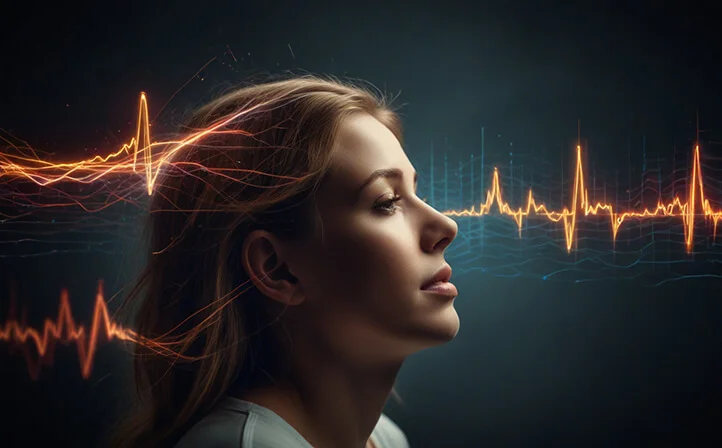
Applications of Bioacoustic Correction
Thanks to its safety, non-invasiveness, and ability to influence the fundamental processes in the body, bioacoustic correction is used in various fields of medicine and wellness. This method can be applied both for the treatment of specific diseases and for general health improvement and prevention of various disorders.
The spectrum of bioacoustic correction applications is extremely broad and continues to expand as new scientific research emerges. It encompasses areas such as the treatment of musculoskeletal disorders, metabolic issues, psychosomatic conditions, as well as rehabilitation after injuries, surgeries, and strokes. Furthermore, bioacoustic correction shows promising results in challenging fields such as oncology, neurodegenerative diseases, and autoimmune disorders.
Treatment of Musculoskeletal Disorders
One of the most common and successful areas of bioacoustic correction is the treatment of musculoskeletal disorders, such as:
- osteochondrosis and other degenerative spinal diseases;
- arthritis and arthrosis (rheumatoid arthritis, osteoarthritis, etc.);
- consequences of injuries and fractures of bones and joints;
- myositis, tendinitis, and other muscle pathologies;
- fibromyalgia and chronic muscle pain syndrome.
Due to the ability of sound waves and vibrations to penetrate deep into tissues, bioacoustic correction effectively impacts affected areas by reducing inflammation, improving blood circulation, and stimulating the regenerative processes of bone and cartilage tissue.
Many patients report significant pain relief, increased joint mobility, and overall well-being after a course of bioacoustic therapy.
Correction of Metabolic Disorders
Bioacoustic correction can be successfully applied for the treatment and prevention of various metabolic disorders, such as:
- obesity and metabolic syndrome;
- type 1 and type 2 diabetes;
- lipid metabolism disorders (dyslipidemias);
- thyroid gland pathologies (hypothyroidism and hyperthyroidism);
- microelement metabolism disorders.
By influencing the resonance frequencies of cells and organs responsible for metabolic processes, metabolism can be activated, nutrient absorption improved, and the functioning of the endocrine system, which regulates the body’s hormonal balance, normalized.
Bioacoustic correction has proven effective in weight reduction for obesity, improving glycemic control in diabetic patients, and normalizing cholesterol and other lipid fractions in the blood.
Additionally, its application can contribute to restoring thyroid function and normalizing microelements such as zinc, selenium, iron, etc., necessary for maintaining healthy metabolism.
Therapy of Psychosomatic Disorders
Modern research shows that many psychosomatic disorders, such as clinical depression, anxiety disorder, chronic fatigue syndrome, fibromyalgia, and others, are closely linked to disturbances in the body’s energy balance and informational flows.
By influencing these processes, bioacoustic correction helps restore psycho-emotional balance and improve overall well-being in these conditions. Its application has shown positive results in reducing stress, anxiety, and depression levels, as well as alleviating pain in fibromyalgia.
Additionally, bioacoustic therapy can be useful for correcting sleep disorders, which often accompany psychosomatic conditions. Special sound therapy programs can synchronize the body’s biorhythms and ease falling asleep.
Rehabilitation After Injuries, Surgeries, and Strokes
Due to its ability to stimulate regenerative processes and accelerate tissue healing, bioacoustic correction is an effective method of rehabilitation after injuries, fractures, surgeries, and strokes.
Its application promotes faster recovery of function in affected areas, reduces the risk of adhesions and scar formation, and accelerates recovery after reconstructive surgeries on bones, joints, and soft tissues.
In the case of strokes, bioacoustic correction helps speed up the recovery of impaired brain and nervous system functions by improving blood supply to affected areas and stimulating neurogenesis (the formation of new nerve cells).
Additionally, its use is indicated for rehabilitation after traumatic brain injuries, helping to restore cognitive functions and reduce the consequences of cerebrovascular accidents.
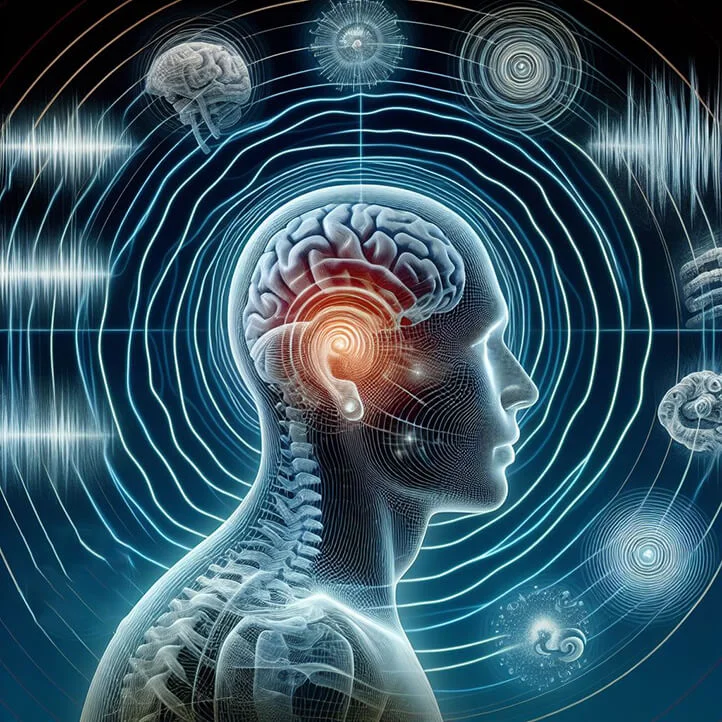
Bioacoustic Correction Procedure
A bioacoustic correction session is a comprehensive procedure conducted under the supervision of a qualified specialist in an equipped office or medical center. The safety and effectiveness of the procedure depend on proper organization and execution of all its stages.
Patient Preparation
Before starting the procedure, a detailed conversation with the patient is conducted to determine their complaints, medical history, overall health status, and individual characteristics. The specialist must consider these factors to select the most effective treatment mode and avoid potential contraindications.
At this stage, it is important to create a comfortable and relaxing environment for the patient so that they can fully relax and prepare for the upcoming procedure. Some specialists recommend performing breathing exercises or meditating before the session.
Selection of Treatment Mode and Parameters
Based on the gathered information, the specialist selects the bioacoustic correction mode to be applied during the session. This includes the following aspects:
- determination of the treatment areas (local or general);
- selection of frequencies and signal forms corresponding to the therapy’s goals;
- setting the amplitude, duration, and other parameters of the exposure;
- creating a full session program taking into account the dynamics of the impact.
The experience and knowledge of the specialist are crucial here, as they must know how to correctly combine various parameters to achieve the best therapeutic effect. The more precisely the modes are selected, the more effective the therapy will be.
Session Execution
During the session, the patient is positioned in a special chair, on a couch, or inside an acoustic chamber, depending on the chosen method. Emitters or applicators are placed according to the pre-set treatment mode.
The session duration ranges from 20 to 60 minutes, depending on the specific case, therapy goals, and the patient’s condition. During this time, sound waves and vibrations affect the body according to the predetermined computer program.
Most patients describe the sensations during the session as pleasant and relaxing, similar to listening to melodic music or being in a meditative state. Some may experience temporary discomfort or unusual sensations at the start of the procedure, but these quickly subside as the body adapts.
Throughout the session, the specialist monitors the patient’s condition and, if necessary, adjusts the parameters to achieve optimal results.
Post-Procedure Recommendations
After the session, it is generally recommended to maintain a balanced diet rich in vitamins, minerals, and antioxidants, as well as to increase fluid intake to improve the body’s detoxification. Light physical activity, outdoor walks, and relaxation practices, such as yoga or meditation before sleep, are also beneficial.
In some cases, a course of several bioacoustic correction sessions may be required to achieve lasting results. The course duration depends on the severity of the condition and the patient’s individual characteristics.
After completing the therapy, regular check-ups are recommended to monitor health status and timely detect any relapses or new issues.
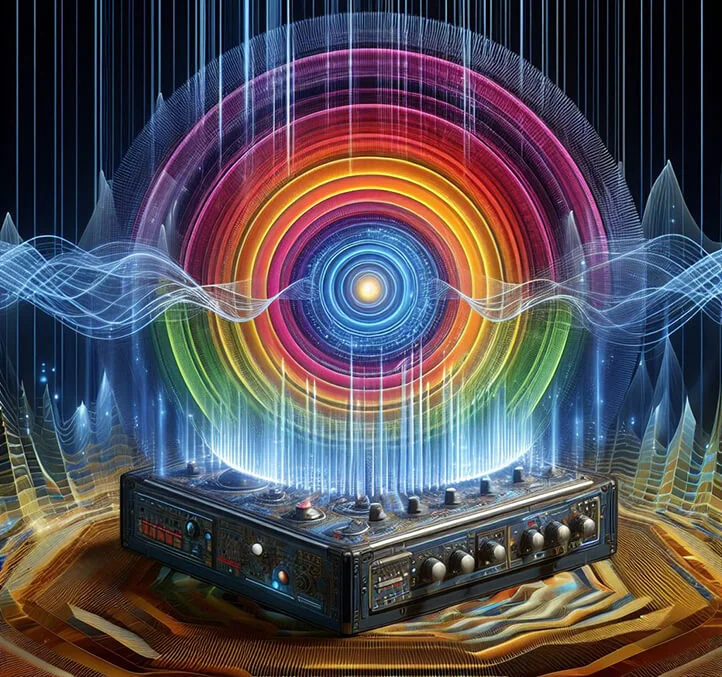
Safety and Contraindications
Bioacoustic correction is considered a completely safe and non-invasive therapy method. However, like with any medical intervention, certain safety precautions should be observed, and contraindications considered.
Possible Side Effects
In the vast majority of cases, bioacoustic correction is well tolerated by patients and does not cause any serious side effects. However, in rare cases, some patients may experience the following temporary reactions:
- mild dizziness or nausea after the first sessions;
- short-term fatigue or drowsiness;
- exacerbation of chronic disease symptoms at the beginning of therapy.
These symptoms usually resolve quickly on their own and do not require special treatment. They are related to the body’s adjustment to a new mode of functioning under the influence of bioacoustic correction.
To reduce the risk of side effects, it is important to strictly follow the specialist’s recommendations regarding the treatment mode and parameters and promptly inform them of any unusual sensations during the procedure.
Risk Groups
Bioacoustic correction is not recommended or requires special caution in the following conditions:
- pregnancy (especially in the early stages to avoid affecting fetal development);
- presence of implanted electronic devices (pacemakers, neurostimulators, cochlear implants, etc.);
- acute infectious diseases in the active phase;
- severe mental disorders with impaired perception of reality;
- malignant tumors (to avoid the risk of stimulating tumor growth).
In these cases, the decision to undergo bioacoustic correction should only be made after thorough consultation with the treating physician and a careful assessment of the potential risks and expected benefits.
Precautionary Measures
To ensure the maximum safety of bioacoustic correction procedures, the following precautionary measures must be observed:
- procedures should only be performed under the supervision of a qualified specialist who has undergone proper training;
- strictly adhere to the recommendations on sound exposure modes and parameters;
- use only certified and regularly inspected equipment;
- avoid intense exposure to areas with tumors, bleeding, or fresh wounds;
- do not perform procedures under the influence of alcohol or drugs;
- disinfect equipment (applicators, etc.).
Following these simple rules will minimize any risks and ensure the maximum safety and effectiveness of the procedures.

Prospects for the Development of Bioacoustic Correction
Bioacoustic correction is a relatively young and actively developing field in alternative and complementary medicine. As scientific knowledge deepens and technologies improve, its possibilities and areas of application will continue to expand.
New Areas of Application
Currently, there is active fundamental and clinical research exploring the potential of bioacoustic correction in areas such as:
- treatment of oncological diseases (in combination with traditional methods);
- therapy for neurodegenerative disorders such as Alzheimer’s disease, Parkinson’s disease, etc.;
- correction of reproductive system disorders and infertility;
- rehabilitation after strokes, traumatic brain injuries, and other nervous system damage;
- therapy for autoimmune diseases (multiple sclerosis, rheumatoid arthritis, etc.).
The initial results are promising, and in the future, bioacoustic correction may become an effective complement to traditional treatment methods in these complex and multifactorial areas.
Scientists are also exploring the potential use of bioacoustic correction as a preventive and wellness tool to maintain general vitality and increase the body’s resistance to stress.
Improvement of Equipment and Techniques
Ongoing efforts are being made to improve the hardware and software used in bioacoustic correction. New types of emitters and applicators are being developed, allowing for more precise and effective targeting of specific areas of the body.
Techniques for creating individualized treatment programs based on the specific characteristics of each patient’s body, genetic analysis data, bioresonance diagnostics, and other factors are also being improved. This will make therapy more personalized, safe, and effective.
In addition, research is underway on the development of portable devices for bioacoustic correction, which could be used at home to maintain health and prevent various disorders.
Integration with Other Therapies
In the future, bioacoustic correction may be integrated with other alternative and traditional therapies to achieve a synergistic effect. For example, it could be combined with phytotherapy, osteopathy, massage, physiotherapy, reflexology, and even conventional pharmaceutical approaches.
Such a comprehensive therapy approach would allow for multiple areas of the body to be treated simultaneously, increasing its effectiveness in addressing a wide range of diseases, especially chronic and multifactorial conditions.
Scientists are also considering the potential integration of bioacoustic correction with virtual and augmented reality technologies, which could open new horizons in rehabilitation and therapy for various disorders.
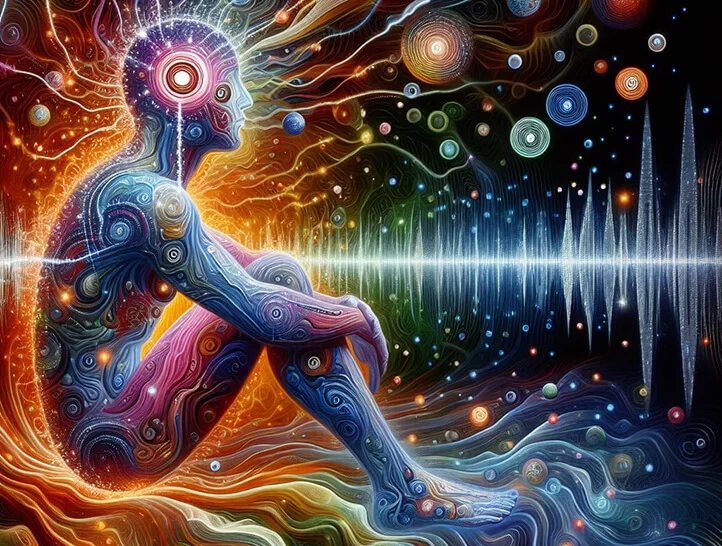
Conclusion
Bioacoustic correction is an innovative and promising method of improving the body’s health, based on the resonant effects of sound waves and vibrations. Its main advantages are safety, non-invasiveness, and the absence of side effects when applied correctly.
By targeting the resonant frequencies of cells, tissues, and organs, bioacoustic correction promotes the restoration of impaired functions, activation of metabolic processes, improvement of blood circulation, and stimulation of the body’s regenerative processes. Additionally, it positively impacts energy and informational flows, normalizing the functioning of all bodily systems.
Currently, this method is successfully used to treat a wide range of conditions, including musculoskeletal disorders, metabolic imbalances, psychosomatic disorders, and in rehabilitation after injuries, surgeries, and strokes.
Bioacoustic correction has proven effective in reducing pain, improving joint mobility, normalizing weight and metabolic parameters, reducing stress and anxiety levels, accelerating tissue healing, and restoring lost functions.
One of the key advantages of bioacoustic correction is its comprehensive impact on the body, allowing it to address not only the symptoms but also the underlying causes of diseases. As a result, it can serve as an effective complement to traditional treatments, enhancing and accelerating recovery processes.
In the future, further development of bioacoustic correction is expected, along with the discovery of new areas of application, such as oncology, neurodegenerative diseases, autoimmune disorders, and many others. Methods and equipment will also continue to be refined to increase the precision and personalization of therapy.
An important direction will be the integration of bioacoustic correction with other alternative and traditional approaches to create comprehensive treatment and rehabilitation programs.
Although this therapy method is still in its relatively early stages of development, it has already demonstrated its enormous potential and ability to improve the quality of life for people suffering from a wide variety of ailments. As further research is conducted and new technologies are implemented, bioacoustic correction will undoubtedly become one of the leading areas in the field of alternative and complementary medicine in the 21st century.




